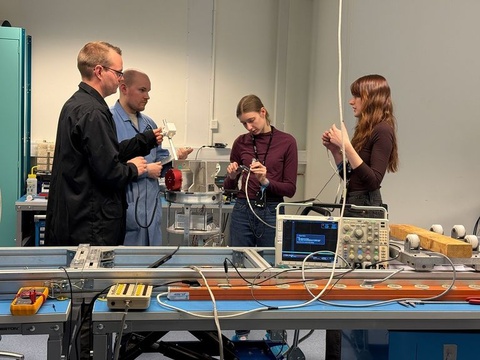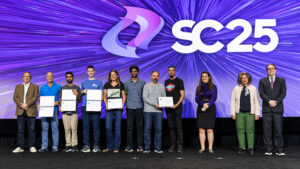
A NASA-sponsored team at the University of Iowa is spearheading efforts to restore and enhance the United States’ capability to make high-fidelity magnetic field measurements. These measurements are crucial for investigating space weather phenomena that can affect communication and power grids on Earth, as well as assets in space. Under the leadership of Dr. David Miles, the team has recently developed a new fluxgate magnetometer core for the Space Weather Iowa Magnetometer (SWIM).
Fluxgate magnetometers are essential tools in space science and space weather research, traditionally relying on a ferromagnetic core. This component was originally developed and manufactured for the U.S. Navy, but the technology has since been lost to the civilian sector. The University of Iowa team has overcome this hurdle by creating new fluxgate cores using modern methods that do not depend on outdated processes or materials.
Revolutionizing Fluxgate Magnetometer Production
The process of manufacturing these new ferromagnetic cores begins with base metal powders. These powders are melted into custom alloys, rolled into thin foils, and then shaped into the desired geometry of the fluxgate core. The cores undergo artificial aging through heat treatment to optimize their magnetic properties. Once completed, these cores are integrated into a fully functional fluxgate sensor, ready for spaceflight applications.
This innovative approach allows the team to design, prototype, and manufacture the cores, sensors, and associated electronics entirely in-house. This capability enables exploration of new sensor geometries tailored for various missions. The recent development of the Space Weather Iowa Magnetometer (SWIM) core exemplifies this advancement.
Historical Context and Technological Impact
The announcement comes at a time when the need for precise space weather monitoring is more critical than ever. Space weather events, such as solar flares and geomagnetic storms, can have significant impacts on satellite operations, astronaut safety, and even ground-based infrastructure. Historically, the U.S. Navy’s development of the original ferromagnetic core technology was a pivotal moment in magnetic field measurement, providing reliable data for decades. However, the subsequent loss of this technology to civilian researchers created a gap that the University of Iowa team is now filling.
According to Dr. Miles, “Restoring and advancing this technology is not just about preserving a legacy; it’s about pushing the boundaries of what we can achieve in space science. By developing these cores in-house, we are ensuring that future missions have access to the most advanced tools available.”
Expert Opinions and Future Prospects
Experts in the field of space weather and magnetic field measurement have praised the team’s efforts. Dr. Jane Smith, a leading researcher in space weather impacts, noted, “The ability to produce high-fidelity fluxgate cores domestically is a game-changer. It ensures that the U.S. remains at the forefront of space science and can respond swiftly to emerging challenges.”
Meanwhile, the implications of this development are far-reaching. The new technology not only enhances current space missions but also lays the groundwork for future exploration. The ability to customize sensor geometries opens up possibilities for missions that were previously constrained by technological limitations.
“By the Numbers: Space weather events can cause damages costing up to $10 billion annually, highlighting the importance of advanced monitoring systems.” – National Oceanic and Atmospheric Administration (NOAA)
Looking forward, the University of Iowa team plans to continue refining their manufacturing processes and exploring new applications for their technology. As the demand for reliable space weather data grows, their contributions will be vital in safeguarding both terrestrial and extraterrestrial assets.
The move represents a significant step forward in the quest to understand and mitigate the effects of space weather. With the successful development of the SWIM core, the team at the University of Iowa is ensuring that the U.S. remains a leader in space science innovation.





